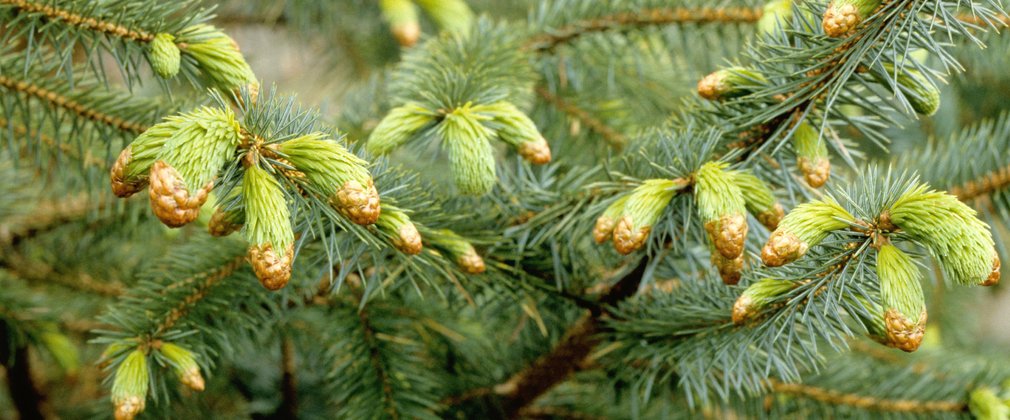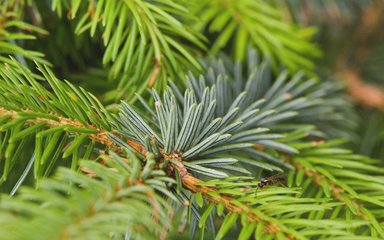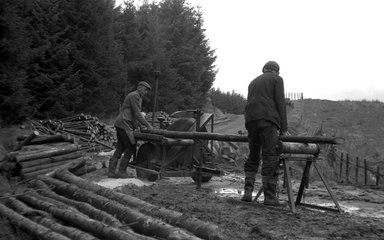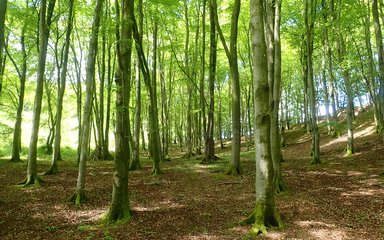
Named after Sitka in southern Alaska, this species has been the mainstay of the forestry in England. In fact, most of the timber used in this country comes from Sitka spruce because it can adapt to different conditions and grows well in cold, wet places where other trees struggle.
Sitka spruce facts and figures
- the natural range of the Sitka spruce (Picea sitchensis) is along the west coast of North America.
- Sitka spruce generally grows to around 55m.
the nose cones of intercontinental ballistic missiles are made from Sitka spruce because when the missile re-enters the earth’s atmosphere it burns up with less heat than metal.

Sitka spruce identification tips
Heading out into the forest? Here are some top things to look for when trying to spot Sitka spruce:
- bark: greyish-brown and flakes off in round scales when mature.
- needles: solitary with a blue-grey tint and sharp points.
- cones: light brown and have thin, papery scales with a crinkled edge.
- branches: droop as the tree matures.
How Sitka spruce is used
Sitka spruce is widely used. The paper that many magazines and newspapers are printed on comes from this tree, and even cellophane wrappers. This is because the wood is very white and the fibres are long, great for making wood pulp for paper and cardboard.
A versatile timber, it is used for pallets, packing cases and manufactured boards for all sorts of uses. Sitka spruce also produces construction grade timber, the best timber that can be used for building.

Sitka spruce and future forestry
In the past, Sitka spruce had been overwhelmingly planted in a 'monoculture'. Vast areas of a single species of tree are not very resilient to storms, pests or disease. These threats are increasing with climate change.
Today we are diversifying forests when we're replanting, to introduce other species including broadleaves. We're also restoring areas of Sitka spruce in places that we would not plant today, such as ancient woodland and upland peat bogs.
Sitka spruce will likely continue to be a useful tree for sustainable forestry, especially in western areas of the country predicted to get warmer and wetter with climate change because it produces high volumes of timber in humid conditions.

